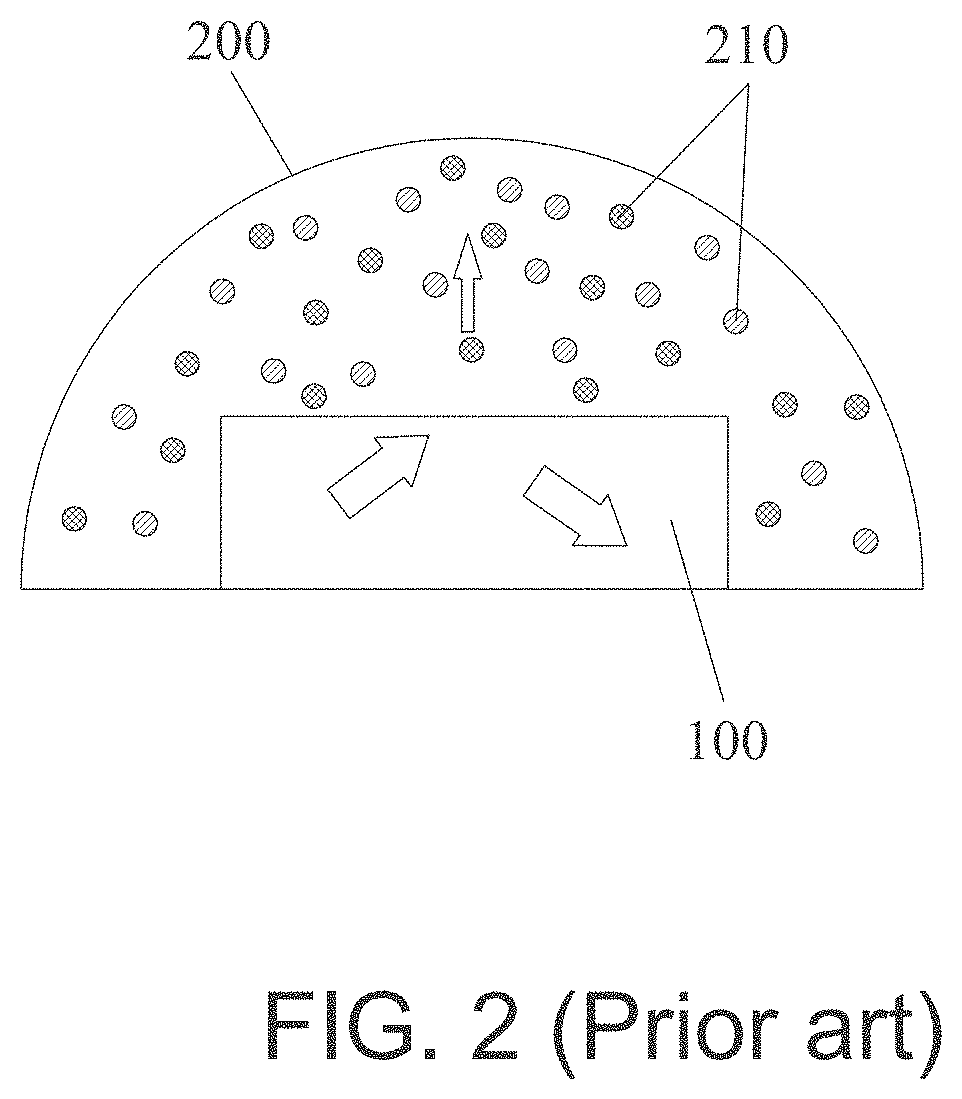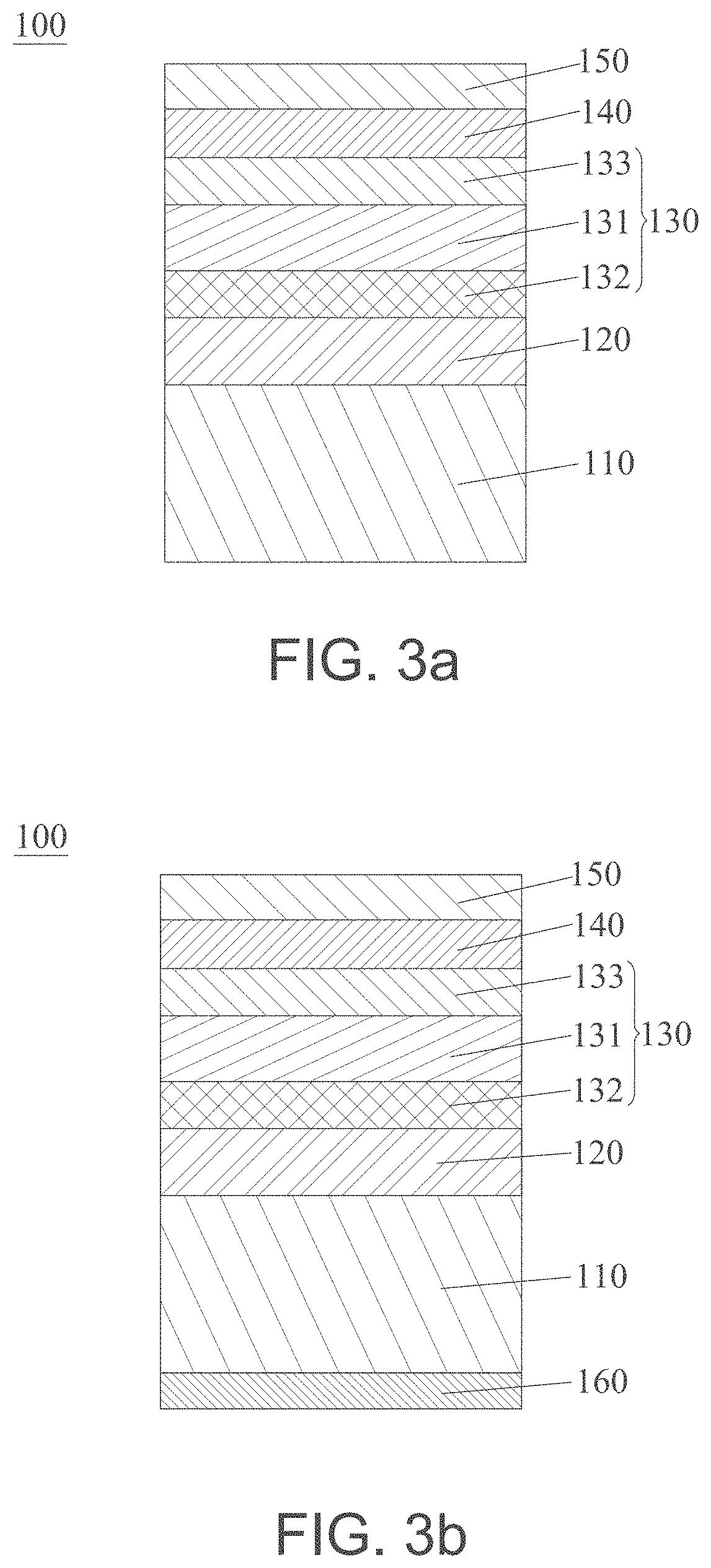Thin-film white LED chip
a white led chip and thin film technology, applied in the field of thin film white led chips, can solve the problems of only down-converting the energy of photons of phosphorescent/fluorescent materials, affecting the overall efficiency of white led chips, and low external quantum efficiency of blue and ultraviolet leds, so as to improve external quantum efficiency, reduce lighting energy consumption, and reduce production costs
- Summary
- Abstract
- Description
- Claims
- Application Information
AI Technical Summary
Benefits of technology
Problems solved by technology
Method used
Image
Examples
Embodiment Construction
[0038]The embodiments of the present invention will now be described with reference to the accompanying drawings. Similar element numbers in the accompanying drawings represent similar elements.
[0039]In order to explain in detail the technical content, construction features, the purpose and effect achieved by the present invention, the following combined with the implementation and the attached drawings are described in detail.
[0040]Referring to FIGS. 3a-4b, a thin-film white LED chip 100 of the present invention includes a transparent substrate 110, a first transparent electrode 120, an emissive structure 130, a second transparent electrode 140, and a first phosphorescent / fluorescent layer 150 respectively arranged in sequence. Specifically, in an inverted structure, the emissive structure 130 includes a emissive layer 131, an electron injection layer 133 and a hole injection layer 132 respectively formed at both sides of the emissive layer 131, and a total thickness of the electro...
PUM
 Login to View More
Login to View More Abstract
Description
Claims
Application Information
 Login to View More
Login to View More - R&D
- Intellectual Property
- Life Sciences
- Materials
- Tech Scout
- Unparalleled Data Quality
- Higher Quality Content
- 60% Fewer Hallucinations
Browse by: Latest US Patents, China's latest patents, Technical Efficacy Thesaurus, Application Domain, Technology Topic, Popular Technical Reports.
© 2025 PatSnap. All rights reserved.Legal|Privacy policy|Modern Slavery Act Transparency Statement|Sitemap|About US| Contact US: help@patsnap.com



